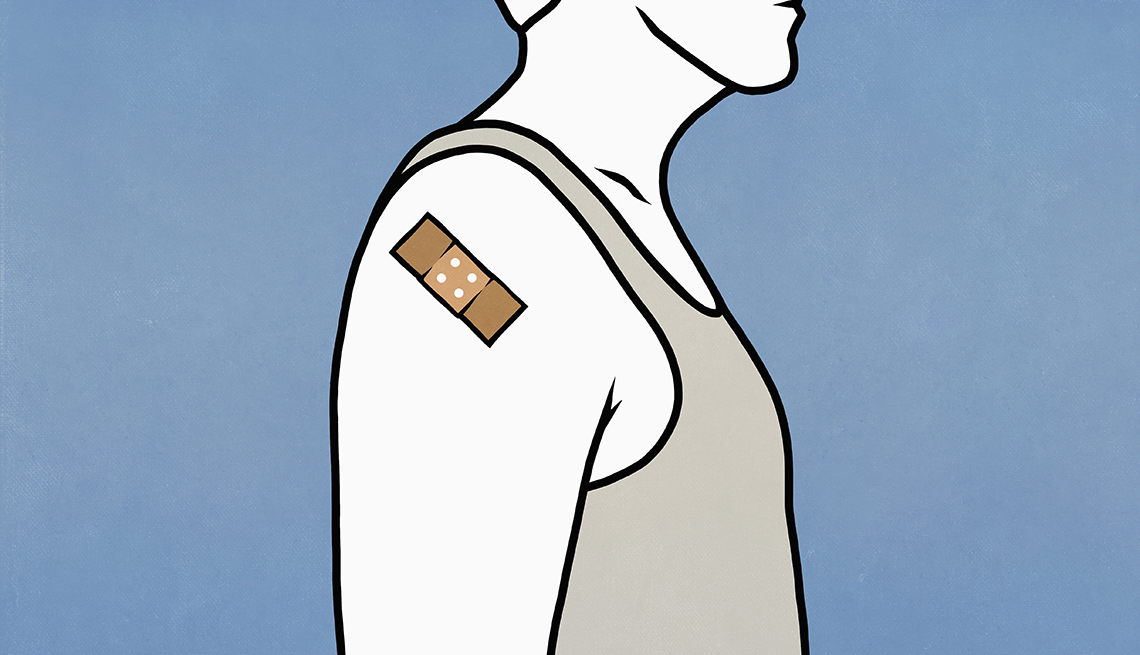
- Select a language for the TTS:
- UK English Female
- UK English Male
- US English Female
- US English Male
- Australian Female
- Australian Male
- Language selected: (auto detect) - EN
Play all audios:
I do think for some very high-risk people, an additional shot — maybe in the spring — may be helpful. But we don’t know if that’s going to be necessary. _If you’re relying on a prior
infection from nine months ago, or if you’re relying on your vaccine from a year ago, you’re not going to have very much protection against BQ.1.1._ — Ashish Jha, M.D., White House COVID-19
response coordinator IF YOU DO GET COVID-19 THIS WINTER AND YOU ARE 50 OR OLDER, SHOULD YOU BE CALLING YOUR DOCTOR AND ASKING ABOUT TREATMENTS? Short answer, yes. Long answer, absolutely
yes. The treatments, particularly Paxlovid [an oral antiviral], do a remarkable job of keeping people out of the hospital, keeping people out of the ICU and preventing deaths. We are now at
a point where if you are up to date on your vaccines and if you get infected and you take Paxlovid, you are just not going to die of this virus. We are at a point where the mortality from
this virus is close to zero in that context. Almost every death that is happening [and the virus is killing, on average, more than 2,600 Americans a week, CDC data shows] is because either
the person who died wasn’t up to date on their vaccines or didn’t take treatments when they got an infection. And almost every death is occurring in people over 50, with the majority of
deaths right now in people over 70. What’s been disappointing is seeing that a lot of 75- and 80-year-olds are not being treated [for COVID-19]. To me that’s unconscionable. Paxlovid is easy
to get, it’s free, it’s widely available. There are some issues that you have to manage if you are on other medicines, where you may have to stop them or adjust the doses for a few days.
That’s an inconvenience, but the alternative is that you could end up getting really sick. ARE THERE ARE ANY COMMON MISCONCEPTIONS OR MISINFORMATION OUT THERE ABOUT PAXLOVID THAT YOU THINK
MIGHT BE CONTRIBUTING TO PEOPLE NOT TAKING IT? I think there are two sets of issues that are misperceptions. One, is the issue of rebounds, which is when you get better and then it looks
like you get worse again. That also happens when people don’t take Paxlovid. That’s actually a normal part of this virus and we see this in a lot of people who are not treated — they get
better and then they get worse again. Here’s what we know about what happens with rebound with Paxlovid: The data that we have suggests it happens 10 to 15 percent of the time. So for a
majority of people, it doesn’t happen at all. Second, and probably the most important thing: When people get that rebound, they don’t end up in the hospital. So rebound is an annoyance;
rebound can be disruptive. But rebound does not end up getting people particularly ill and it certainly doesn’t kill you. The second [misperception] is this issue around drug-drug
interactions. There are lots of medicines that I use in clinical practice, that we all use in clinical practice, that have interactions with other drugs. It’s a normal thing; medicines can
interact with each other. And in general, the way you handle it is not to say, ‘We won’t give you a lifesaving drug because it can interact with other drugs.’ We say, ‘We have to manage
this.’ It might mean that you need to stop your cholesterol medicine for five days, or you may need to take half the normal dose of another medicine. These are normal things we do in
clinical practice all the time. It’s a new medicine, doctors are still learning about how to manage it effectively. But the evidence on how to manage those drug-drug interactions is, at this
point, really quite clear.








